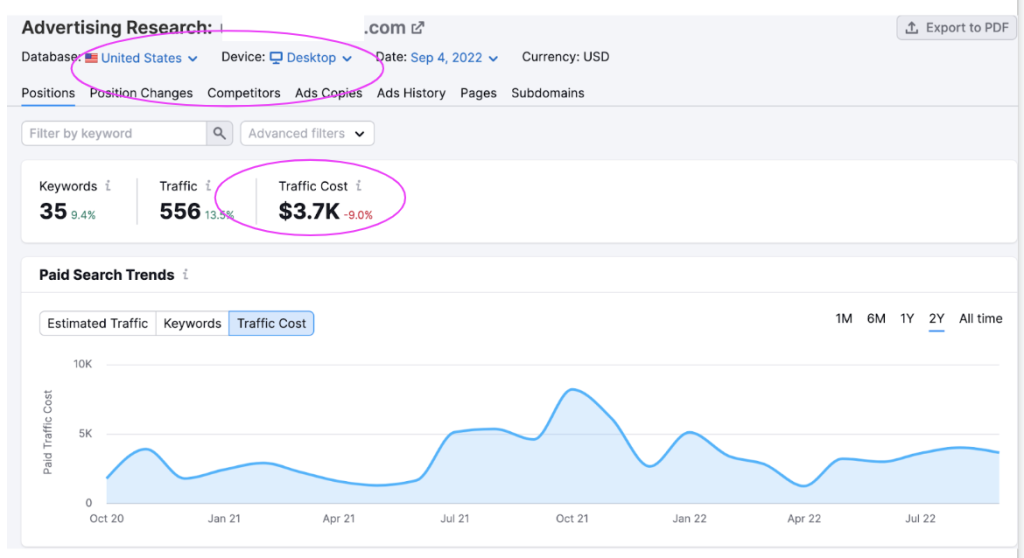I’ve been helping B2B businesses advertise with Google Ads for so long, I’m always a little surprised when I discover that not every B2B is already doing it.
Once upon a time, B2Bs hesitated to advertise with Google because they didn’t see the value. But today, that objection has fallen by the wayside. Study after study confirms the role that independent research—including Google searches—plays in B2B buying decisions.
Back in 2014, for example, Google found that 71% of B2B buyers start their research with a generic Google search.
More recently, Gartner found that B2B customers continue to evolve away from in-person sales interactions to digital channels. Today, only 17% of the total B2B purchase journey is spent with sales reps. In contrast, B2B buyers spend 45% of their time researching.
So what’s holding these B2Bs back from starting a Google Ads program? Often, it’s because they want everything perfect before they start.
But Google advertising doesn’t work that way.

No B2B Google Ads program is perfect on day one
Successful Google Ads programs are built through a combination of estimating, monitoring, and adjusting. You’re never going to have the perfect program right out of the gate.
So rather than delay implementation of your B2B’s Google Ads program any longer, let’s tackle the most common questions and concerns:
- How much budget will you need?
- What will you need for landing pages?
- How will you know when it’s working?
1. How much budget will you need?
The amount of budget you’ll need varies depending on your industry, your solution, the competitive landscape, and other factors.
You want to find that sweet spot between setting your budget too low (and your ads don’t compete) and setting your budget too high (and you overspend).
Fortunately, there are tools to help. Semrush, for example, can help you understand what your competitors are paying per click, which can help you estimate what you’ll need to spend every month to hit that sweet spot.
Here’s a Semrush screenshot for one B2B we recently talked to:

As you can see, the estimated traffic cost for this B2B is $3,700 per month (circled in pink).
However, this single Semrush view doesn’t include mobile, display ads and video ads. You can find this information in Semrush, but you have to generate different views. Also, the $3,700 estimate is only for the U.S. market (also circled in pink).
Based on this data and other sources, we estimate a good starting monthly budget for this B2B is $10,000 for the U.S. That’s not to say we couldn’t make a lower budget work—but we would need to limit our advertising program by ad types and audience.
Still, it’s important to keep in mind that Semrush and other tools only provide estimates. We’ll need to adjust as we go.
More important than getting your budget exactly right from day one is to keep it consistent. Rather than have a huge launch budget the first month, and a drop off in subsequent months, it’s much better to evenly spread the entire amount over several months.
So unfortunately, we can’t give you a definitive answer when it comes to budget. There’s no magic number. What we can do is make a strong estimate, monitor, and adjust.
2. What will you need for landing pages?
No matter how perfect your “front end” advertising efforts are (ad messaging, targeting, etc.), the “backend” (post-click activity) is just as important.
Once prospects click on your ad, you need to send them somewhere: typically, a landing page that encourages them to take the next step in their buying journey.
Again, your landing pages don’t have to be perfect. But they should include these three basic elements in order to help your Google Ads program succeed:
1) Content appropriate for the buying stage
Just as you want your ad messaging to speak to a specific stage in your audience’s buying journey, so should your landing pages.
So, if your audience is in the information gathering stage, your ads should take visitors to informational pages where they can sign up for a webinar or watch an informative video, for example.
If your audience is close to making a purchase decision, your ads should click through to a landing page where they can submit their contact information to the sales team or sign up for a one-to-one demo.
2) Relevant, visible call to action (CTA)
As mentioned above, the purpose of driving people to your landing pages is to get them to convert, whether that’s signing up for a webinar, completing a form, or something else.
But conversions won’t happen unless you provide a clear and easy way for your audience to take that action, such as a highly visible CTA button or short contact form.
3) Trust signals and social proof
Because B2B solutions are often complex and high-priced, it’s important to provide trust signals and social proof on your landing pages, such as industry certifications, written customer reviews, and video testimonials. Showcasing happy customers who can vouch for you and your solution encourages prospective customers to convert.
Having said all this, you don’t need perfect landing pages to get started. Sometimes an existing landing page on your website will do. For example, if your ad campaign is for a particular product, you can send leads to that product page. If your ad campaign is to raise brand awareness, you can send leads to an existing information page.
3. How will you know when it’s working?
Naturally, you’ll want hard evidence that your B2B ads program is working. As ad program managers, we want the same.
That’s why we track data and conversions in Google Ads and Google Analytics.
Many B2B advertisers are also keen to connect their sales platforms to these tools. This is often possible, depending on the platform you use. For example, it’s possible to connect both Salesforce and Pipedrive (via tools such as Zapier).
Stop delaying … and find the right partner for your B2B advertising
If you have these three fundamentals in place (i.e. a reasonable budget, landing pages, and conversion tracking), you have enough to start advertising your B2B with Google.
And the good news is… it’s not too late. Whenever I investigate industries or niches for prospective B2B advertisers, I can almost always find amazing opportunities for them.
But like all big endeavors, finding the right partner is crucial. Talk to your colleagues, past and present, and other industry connections to get their recommendations.
And if you’d like to learn how we can help you start your B2B Google Ads program, we invite you to contact us.






